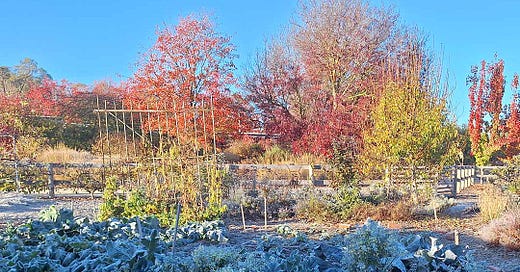The lack of rain. I’m sick of whinging about it. My family want me to shut up. You possibly do too. But I can’t help it.
Last week the wind huffed and puffed. Then it howled and raged. Overnight the huge claret ash trees went from holding the final quarter of their red leaves to completely nude. The next morning everything was covered in red Mallee dust,…




